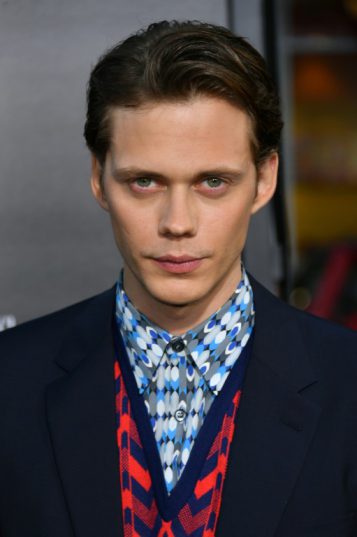Dricus du Plessis title defence on hold following injury rumours?
The big-screen remake of Stephen King's "It," starring the evil entity Pennywise, has smashed box office records and reaffirmed an age-old rule of horror: clowns are creepy as hell.
But while countless movies and television shows have cashed in on so-called “coulrophobia” — or fear of clowns — the primal dread associated with the long-shoed entertainers probably isn’t Hollywood’s fault.
Alexandra Hamlet, a clinical psychologist at the Child Mind Institute in New York, says a large part of the fear comes from a phenomenon known as the “uncanny valley.”
Developed by a Japanese robotics professor in 1970, this is the hypothesis that human replicas that appear almost, but not quite, like real humans elicit feelings of revulsion.
“You think about the types of characters that are most closely linked to humans but aren’t exactly, and in addition don’t have as much of a facial change… those are the ones that are the scariest,” Hamlet told AFP.
The psychologist, who specializes in the evaluation and treatment of mood and anxiety disorders, says her work has led her to appreciate the close link between excitement and fear.
While fear of clowns is undeniably a real phenomenon, Hamlet believes that much of what we call a phobia is nothing more than people “mis-coding” their emotions.
So the increase in heart rate, the muscles tensing, the dilated pupils and the flushing of the cheeks experienced when we see Pennywise, suggests Hamlet, may be caused by excitement, not fear.
– Skin-crawling –

Bill Skarsgard plays Pennywise the clown in the big-screen remake of Stephen King’s ‘It’
“A lot of these people can still go up to a Ronald McDonald or something like that,” Hamlet told AFP.
“What they might actually be experiencing is a combination of this discomfort with not being able to read the facial expression, plus Stephen King doing a really good job freaking us all out, plus a mis-coding of fear and excitement.”
Fear of clowns, psychologists believe, has existed since the days of the royal court jesters of 16th century England.
But Hamlet credits the 1990 TV miniseries of King’s novel “It” — with Tim Curry’s skin-crawling turn as the malevolent Pennywise — for bringing the phobia into the mainstream.
Among the more recent of numerous depictions of the trope is “American Horror Story: Cult,” the seventh season of the hit FX show which began last week, featuring a clown rising from a casket in the opening sequence.
Meanwhile the remake of “It,” starring 27-year-old Bill Skarsgard as Pennywise, hit theaters at the weekend, breaking box office records for horror film opening weekends, taking a staggering $123 million.
Hamlet says she was prompted to look into coulrophobia last year when life began imitating art, with a spate of frightening clown appearances across the United States.
The unusual sightings began in August with reports of people in South Carolina dressed as clowns trying to lure children into the woods.
The appearances soon spread with more than 20 states reporting incidents, and although most were pranks or unverified threats, police made a handful of arrests, including for physical attacks.
– Hysteria –
The craze even spread to Europe, South America and Australia, and the ensuing hysteria dealt yet another setback to the embattled clown community.
The World Clown Association was moved by the imminent release of the theatrical version of “It” to release a statement sticking up for law-abiding, non-razor-toothed clowns across the globe.
The association insisted that “these horror characters are not clowns. Even the character in the movie ‘It’ should be understood to be a fantasy character — not a true clown.”
People dressed as horror clowns, it complained, were “taking something innocent and wholesome and perverting it to create fear in their audience.”
King himself responded to the backlash in April by acknowledging in a tweet that he had upset the clowning community with his 1986 novel — but refusing to take the blame for their creepy image.
“Sorry, most are great. BUT… kids have always been scared of clowns. Don’t kill the messengers for the message,” he said.
Emmy Award-winning Jason Blum, a producer of some of the most iconic horror movies of the last 20 years, including the “Paranormal Activity,” “Insidious” and “Purge” franchises, told AFP he was planning to see “It” this week.
“I think clowns are scary, first of all because they are supposed to be funny, so why do they do something they’re not intended to do? It’s just the idea that you can’t recognize the person at all underneath that costume,” he said.
“You can’t see any vestige of who the person is. I think that the clown face totally disguising the human under it is one thing that’s scary. I think having ‘white face’ generally, white make-up, is a very creepy thing.”
Download our app